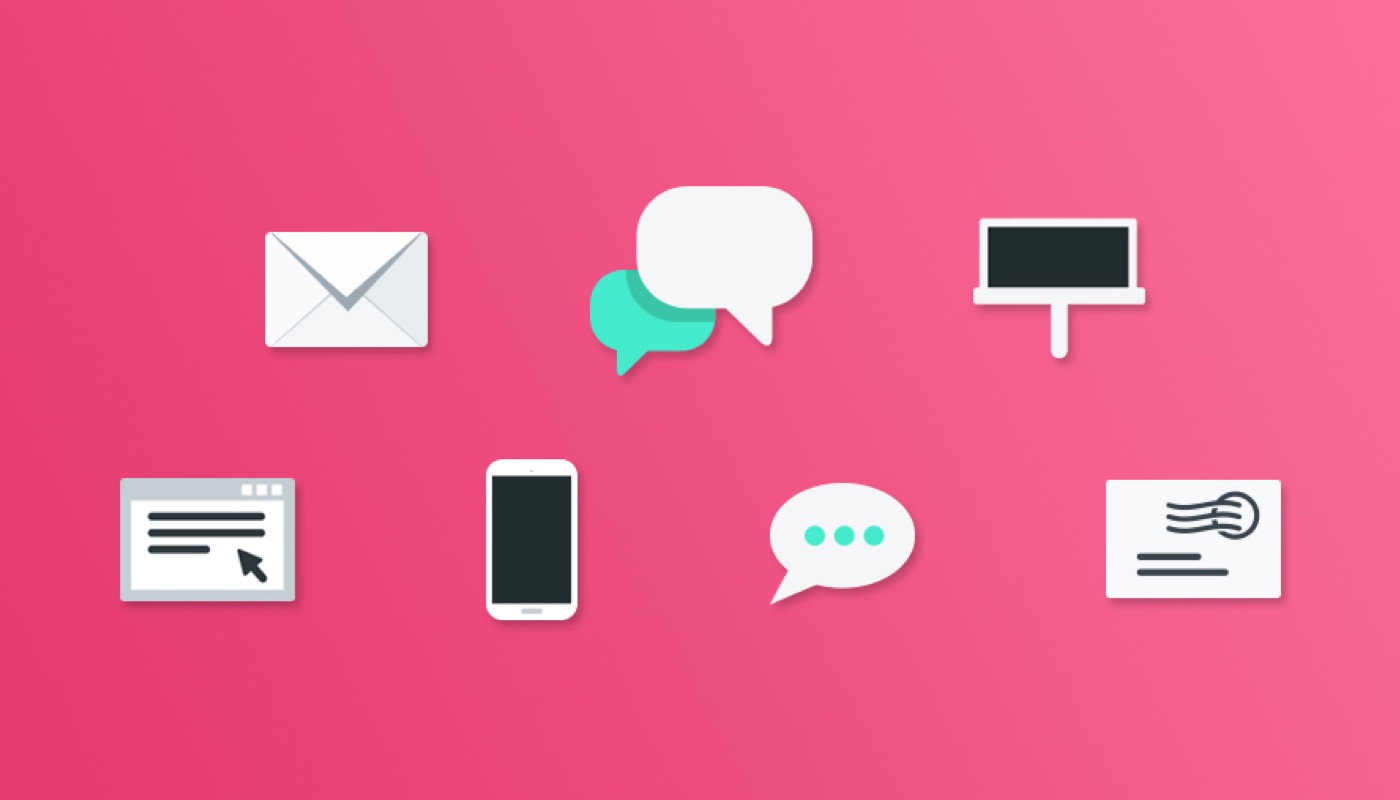July 21, 2017
Multichannel Marketing Strategy
7 Multi-Channel Marketing Best Practices to Create a Personalized Experience
“We are a living in a multi-channel world, and I am a multi-channel girl.” - Madonna. That was the song, right? Jokes aside, we _do_ live in a multi-channel world. The problem is only 14% of organizations say they are currently running coordinated marketing campaigns across all channels. These multi-channel marketing best practices will help you overcome that hump to create consistent, personalized experiences.
1. Try sequential multi-channel messaging
There is no such thing as a mono-channel customer today. As the number of channels a consumer uses to make a purchase increases, so should your touchpoints. Punctuate your marketing message by sequentially trying new channels if one isn’t working. For example, when people think of “marketing automation,” email is the channel most frequently used. After all, the marketing automation industry was birthed out of the batch-and-blast email era. But what do you do when your automated emails aren’t being opened in the first place? Most marketers try email A/B testing their way to success. Another, less utilized approach is to send a similar message through a different channel. In the brand new world of customer journey marketing software, you have multiple channels to choose from:
- In-app messages
- On-website messages
- SMS
- Direct mail So if a contact doesn’t open up an email, you can send the same message through a different channel. Here’s a sequential multi-channel messaging flow example to illustrate.
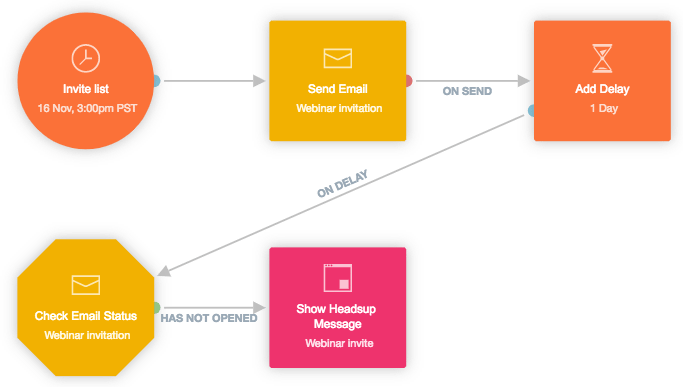 In this case you’re hosting a webinar. You send out an email you worked on for three long hours that gets a 15% open rate…but what about the other 85%?! If a chunk of those come back to your website to log in to your service, you could display a Headsup message to invite them to the webinar a day later.
In this case you’re hosting a webinar. You send out an email you worked on for three long hours that gets a 15% open rate…but what about the other 85%?! If a chunk of those come back to your website to log in to your service, you could display a Headsup message to invite them to the webinar a day later. 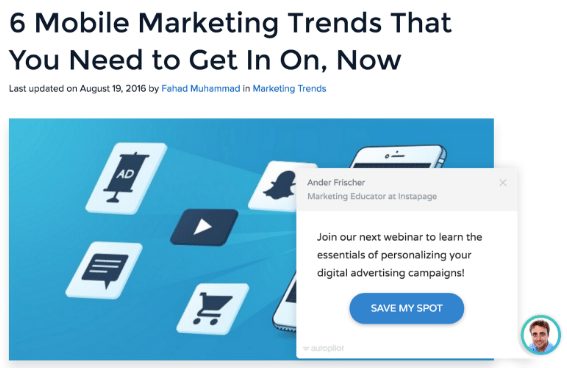 The extra nudge could lead to additional webinar registrants, thanks to making the invitation through a different channel.
The extra nudge could lead to additional webinar registrants, thanks to making the invitation through a different channel.
2. Motivate the next step in the customer journey
Timing is an important factor when thinking through your multi-channel messages. Not only should you be thoughtful about the customer journey stage your audience is in, but you should also consider the order in which your audience will see your messages across different channels. In terms of customer journey stages, use the Customer Journey Marketing Framework as a reference: 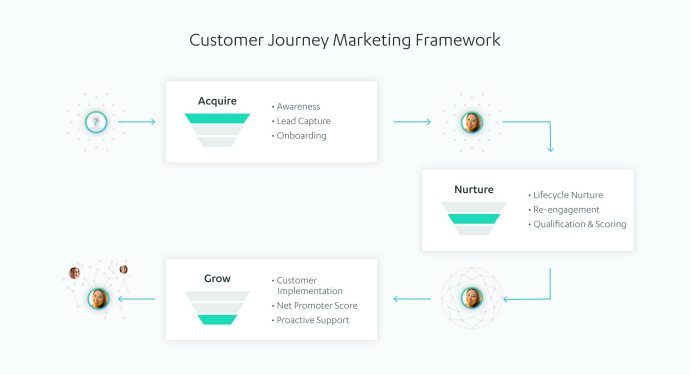 It’s a blueprint that helps you envision how to acquire, nurture, and grow more customers. With the framework in mind, think through the marketing channels you have at your disposal—social, display, retargeting, search, email, text, phone, in-app messages, direct mail, video, in-store experiences—the list goes on. What channels make the most sense to communicate through based on your customer’s journey stage? Say you’re a SaaS company, and want to choose the best channels for each stage.
It’s a blueprint that helps you envision how to acquire, nurture, and grow more customers. With the framework in mind, think through the marketing channels you have at your disposal—social, display, retargeting, search, email, text, phone, in-app messages, direct mail, video, in-store experiences—the list goes on. What channels make the most sense to communicate through based on your customer’s journey stage? Say you’re a SaaS company, and want to choose the best channels for each stage.
- **Acquire **stage channels could include LinkedIn paid campaigns, Google AdWords, email, and on-site messages with a focus on problem awareness.
- **Nurture **stage channels could include retargeting, email, text messages, and nurture emails with a focus on education and showing value through case studies.
- **Grow **stage channels could include email, in-app messaging, and in-person events with a focus on activation, enablement, and encouraging usage. Think about which channel is your first touch and which channels would be subsequent touches to tell a cohesive story. Every time a person interacts with your brand, you want to teach them something new about your offering through a channel where your story won’t go stale. Over time, their knowledge of your offerings will compound, and nudge them further along the customer journey.
3. Automate multi-channel messages based on behavior
Behavior-based messaging is an advanced way to reach contacts at the right time and offer a personalized experience. The way it works is when X happens then Y is sent. Here are a few multi-channel messaging examples to illustrate:
- When a new person signs up for a SaaS free trial, then an email and an SMS are sent
- When a new person becomes a customer, then a direct mail postcard is sent
- When a new person browses a product on your website, then recommend that product and similar products via dynamic retargeting ads The key is to put yourself in your customer’s shoes and ask “What message on what channel makes the most sense in response to this event?” People are more likely to respond to messages that are directly relevant to their previous interactions and interests. If you send a customer an email after they’ve taken action on your website, make sure the content is personalized for their specific needs. Further, if the customer clicks a link from the email, the page you send them to should be relevant and encourage continued interaction.
4. Layer multiple channels on top of each other
Multi-channel marketing is at its best when you layer channels on top of each other to reinforce your messaging. Consider the marketing automation channels we’ve already discussed along with where they meet the contact:
- Email → inbox
- SMS → phone
- Direct mail → physical mailbox
- In-app message → in your product
- On-website message → uhh on your website With these five channels alone, you can send a strong, unified message. You can even add retargeting into the mix, in partnership with your marketing automation channels, to engage with customers while they browse around the web. For example, we layer email and SMS channels on top of each other when users sign up for an Autopilot free trial. Immediately after signing up, users receive this email:
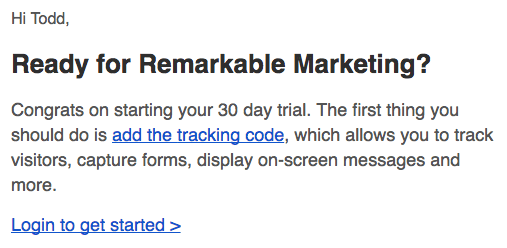 Along with an SMS message right after:
Along with an SMS message right after: 



